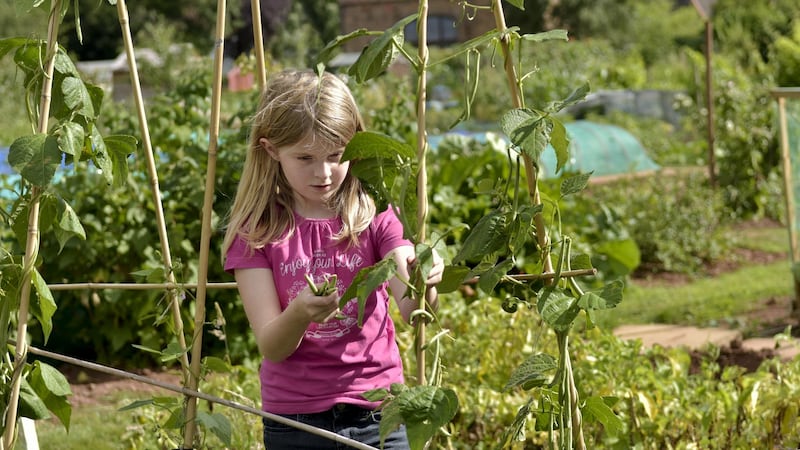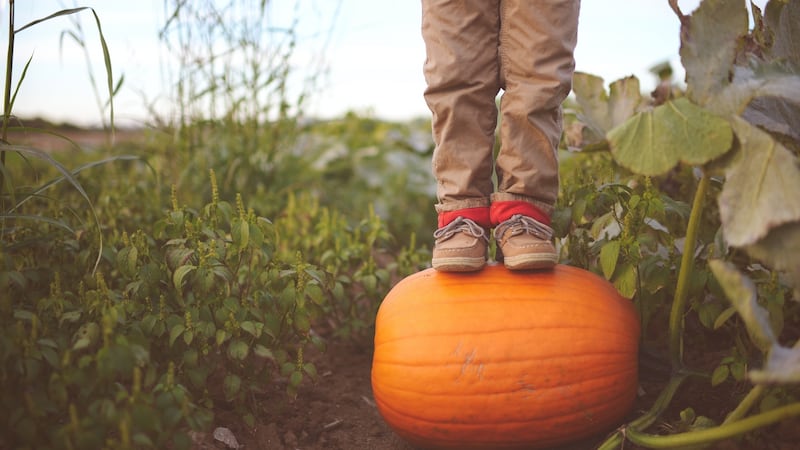Over the past few weeks I’ve been gardening with my young sons as they’ve learned how to hoe and dig, how to rake the ground to the perfect crumbly tilth, a how to pinch fine seed between forefinger and thumb and then gently sprinkle it down the length of a drill before softly covering it with the lightest blanket of soil.
They’ve watched and waited for seedlings to appear, greeting each one with pride and wonder. It’s taught them patience, given them confidence in their ability to coax new life into existence and shown them that despite our topsy-turvy world, nature endures. With this in mind, here are some fun, easy ways to share the special magic of gardening with the children in your life over the coming weeks and months…
1. When you’re a child, the very best gardens aren’t those that are perfectly primped and pruned but those with trees to climb and secret, overgrown places in which to sling a hammock and watch the clouds race by. It’s these kinds of “messy” gardens that children are naturally drawn to and which are fullest of life and richest in biodiversity. As adults we can help them to discover the role that many different habitats can play in supporting garden wildlife from logpiles, hedgerows and “weedy” verges to garden ponds, mini woodlands and wildflower meadows.


The well-known educator, author and school garden expert Paddy Madden's and educator Des Murtagh's new website engagewithnature.ie is an excellent resource in this regard, offering plenty of hands-on advice and down-to-earth nature-based projects for children to enjoy, from making their own snailery or scarecrow to creating a "dinosaur" garden filled with leafy palms and giant tree ferns.
2. Remember the famous fairytale of Jack and the Beanstalk? While they won’t quite reach the towering heights that Jack’s magical plants did, runner beans are hugely productive and very easy-to-grow from seed, quickly throwing out tall twining stems and pretty, pollinator-friendly, edible flowers followed by a prolific crop of delicious beans in late summer.

At this time of year you can sow the large seeds directly into the ground or into a large tub/ pot filled with a good quality soil-based compost ideally enriched with some well-rotted manure and a scattering of slow-release organic pelleted fertilizer. Sow to a depth of 5cm, take precautions against slugs and snail and give the plants some form of sturdy vertical support; bamboo canes are perfect for this job but just make sure to cover the top of each cane with a cork or cane topper to avoid accidental eye injuries.
3. No other flowering annual is as exuberantly joyful as the sunflower (Helianthus annuus), whose rapid pace of growth and giant, disc-shaped, heliotropic blooms captures the imagination of young children with ease. It also appeals to their competitive instincts (adults aren’t immune either), making it the perfect candidate for a socially-distanced sow-along with friends and family. For fairest results, agree on a particular variety and a particular sowing date, and encourage children to record weekly growth levels.

For properly giant sunflowers, get your hands on seed of Helianthus 'Mongolian Giant', 'Giant Yellow', 'Kong' and 'Pike's Peak' (recommended stockists include good Irish garden centres, mrmiddleton.com seedaholic.com and chilternseeds.co.uk ).At this time of year you can either direct-sow the seed on edge into the ground (to a depth of 2cm) or into pots under cover for transplanting outdoors as young seedlings. The former method typically results in slightly taller plants but the latter allows you to more easily create the optimum conditions for quick germination and rapid growth. Sunflowers like a sunny, sheltered spot and a fertile, weed-free soil enriched with some well-rotted manure while it's very important to protect emerging seedlings/young plants from slugs and birds and keep them well watered but not sodden. Liquid feed every two weeks once the plants reach a height of 60cm.
As they get taller, these lofty varieties will also need some form of sturdy vertical support. According to the Guinness Book of Records, the world’s tallest sunflower measured 9.17 m (30 ft 1 in) and was grown by Hans-Peter Schiffer (Germany) in Karst, Nordrhein Westfalen, Germany.

4. If you have the growing space (they like to romp), then pumpkins are yet another colourful, fun and fast-growing vegetable easily raised from seed sown at this time of year. Countless varieties are available, some specially bred to produce fruit of gargantuan, potentially record-breaking proportions (examples include ‘Atlantic Giant’, ‘Big Max’ and ‘Hundredweight’ ), while others are the perfect size for Halloween carving (‘Jack O’ Lantern’). But if tastiness is what you’re after, then go for squash (very close relatives of pumpkins) which are divided into summer and winter types properly harvested and “cured”, the latter can be stored in a frost-free shed over winter. Recommended summer varieties include ‘Sunburst’ and ‘Yellow Crookneck’ while recommended winter varieties include ‘Uchiki Kuri (also known as ‘Red Kuri’) and ‘Tip Top’.
Sow the seed singly and on edge, undercover and in gentle heat, into small individual pots filled with a good quality seed compost for transplanting outdoors as young plants. Take careful precautions against slugs and water well until established. Both pumpkins and squash need a very fertile, weed-free, well-prepared soil and a warm, sheltered, sunny spot in the garden. According to the Guinness Book of records, the world's heaviest pumpkin weighed 1,190.49 kg (2,624.6 lb) and was grown by Mathias Willemijns in Belgium while the fastest 100 m paddled in a pumpkin (yes, really) is 2 min 0.3 sec and was achieved by Dmitri Galitzine (UK) at Trafalgar Wharf, Porchester, Hampshire, UK, on May 23rd 2013.
5. From dandelions and daisies to fairy foxgloves, periwinkles and stichwort, wildflowers have their own special place in our gardens as well as in our shared public spaces yet how many children know their names any more? That sad loss of lore and knowledge is highlighted by a recent campaign initiated by Tela Botanica and led by a collaborative network of botanists throughout Europe who have taken to chalking up (graffitt-style) the names of the wild plants growing in our parks, streets, city pavements and other public spaces. Here in Ireland, wildflower expert and author Zoe Devlin's books and website (wildflowersofireland.net) are brilliant resources for children and adults alike, right down to giving the name as Gaeilge of every species listed.













